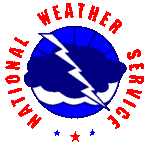|
Term
|
Description
|
|
Chain Law
|
Click here to view the two levels of restriction associated with Wyoming's chain law.
|
|
No Unnecessary Travel:
|
The road is open but travel is not recommended due to hazardous driving conditions.
Generally, this advisory is posted during winter months due to
extremely icy conditions, when visibility is limited due to blowing snow,
or when a combinations of conditions makes travel ill-advised.
Only the most urgent of situations should warrant travel in a No Unnecessary
Travel advisory. Drivers who attempt such travel should be familiar with
local conditions and be very experienced with winter driving.
Please keep in mind that by choosing to travel during hazardous conditions,
you may be interfering with maintenance personnel and their efforts to improve highway safety.
Special Note: Oversize loads are not permitted to travel when a no unnecessary
travel advisory is issued. An en route load may proceed to (or return to)
the nearest parking area or town. At no time shall the load continue beyond
these points unless approved by the Wyoming Highway Patrol.
|
|
Weight-Based Wind Closure:
|
Based on research performed by the University of Wyoming, WYDOT will close a segment of a road
when wind thresholds exceed safe operating speeds. These closures are targeted to specific vehicle weights based on wind speeds,
roadway orientation and geometry, etc. The weight listed is based on Gross Vehicle Weight (GVW). GVW is the total weight
of the truck and payload at a point in time, including any persons in the vehicle and all contents of the tractor and trailer.
For additional information please see our frequently asked questions.
|
|
Extreme Blow Over Risk:
|
In locations where wind gusts are 60 mph or more and where adequate signage to indicate a closure to light,
high profile vehicles is NOT available, WYDOT will issue an Extreme Blow Over Risk warning. This type of
warning may also be initiated when conditions are very icy but the wind gust threshold is less than 60 mph.
The warning is targeted at vehicles that are prone to being blown over or being blown off the road such as
recreational vehicles, moving vans, campers, small trailers and lightly loaded commercial vehicles but smaller
vehicles pulling trailers are also included in this restriction.
|
|
Partial Closure:
|
The road is closed to some but not all vehicles or the road is closed in only one direction (for example only
northbound traffic is permitted). This type of closure can include no trailer traffic, closure to light,
high-profile vehicles, and local traffic only.
|
|
Local Traffic Permitted:
|
In some cases, a road may be closed to through-traffic but commuters and local residents may be permitted
to travel. In these cases, WYDOT will issue a "Local Traffic Permitted" restriction. When this is in effect, local
residents and commuters are permitted to travel within the designated area without a WYDOT Authorized Travel
authorization code.
|
|
Rolling Closure:
|
Ensuring roadway safety is one of WYDOT's top priorities. The small towns along routes with heavy through-traffic have
limited resources in terms of parking, fuel, hotel rooms and other amenities. When a town is at capacity, which can
happen during a long-duration closure, the closure will be rolled back to the next town to avoid stranding travelers in
a location without adequate services. The road may be open in the direction leading away from the affected area. WYDOT
attempts to make accommodations for travelers who do not put a demand on an affected community's resources by issuing
local traffic only restrictions and through the Wyoming Travel Authorization Program (W-TAP)
https://w-tap.wyoroad.info/.
|
|
Black Ice:
|
A thin coating or glaze of ice on the road that is particularly dangerous as it may appear to be a film of water or may not be visible/discernible at all.
|
|
No Trailer Traffic:
|
The No Trailer Traffic restriction is used exclusively on WYO 22 (Teton Pass) and is used at times when
snow and ice combine with the terrain to make stopping of trailers difficult or impossible.
|
|
Falling Rock:
|
The falling rock advisory is used on sections of roadway that pass through rock cut sections. Such sections are
prone to scaling of rock during freeze-thaw periods though rock falls may happen at any time of year.
|
| |
|
Dry:
|
The road is free of puddles and standing water.
|
|
Wet:
|
There are puddles and standing water present; spray coming off cars.
|
|
Slick:
|
Long, continuous sections of icy or snow packed roads. Greater than 50% of road section is icy or snow packed.
|
|
Slick in Spots:
|
Short, non-continuous sections of icy or snow packed road. Less than 50% of road section is icy or snow packed.
|
|
Drifted Snow:
|
Drifts of any size that cross the white line and cause a driver to feel a bump or a pull on the steering wheel.
|
|
Slush:
|
Partially melted ice or snow at least one inch deep and sufficient enough presence in the travel lane as to potentially cause a driver to experience difficulty with directional control of their vehicle. (This
condition report is currently being tested in southwest Wyoming only)
|
| |
|
Snow:
|
Snow in excess of an isolated or occasional shower with the potential to stick to the road surface.
|
|
Rain:
|
In excess of light showers with potential to make the road surface wet.
|
|
Strong Wind:
|
Wind gusts of 40 mph with ANY road condition.
|
|
Fog:
|
Fog that may impair visibility.
|
|
Blowing Snow:
|
Snow propelled by the wind across or along the road surface at least 1 foot above the ground.
|
|
Reduced Visibility:
|
Visibility less than 400 feet for any reason.
|


